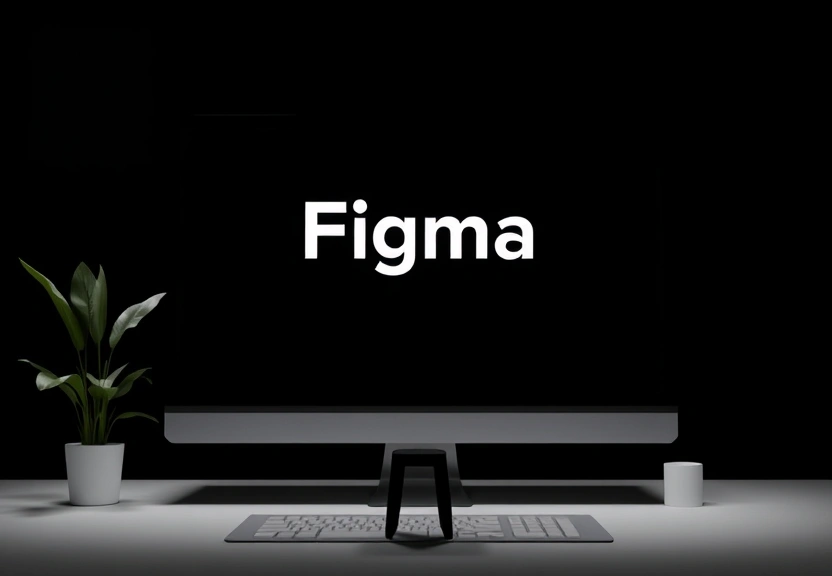Figma’s IPO: Key Insights for Investors on Adobe’s Design Challenger
Figma, the cloud-based design platform that has gained significant traction in the competitive landscape of design software, has recently filed for an Initial Public Offering (IPO). This pivotal move comes less than two years after a proposed megadeal with Adobe was scrapped, leaving many industry analysts and investors intrigued about the company’s potential. As Figma prepares to embrace Wall Street, investors are keen to understand the implications of this IPO, especially in light of Adobe’s dominant position in the design software market.

As Figma sets its sights on public markets, this article dives deep into the key insights for investors. We will explore Figma’s competitive edge against Adobe, the current state of the design software market, and what the future might hold for this innovative company. With design tools becoming essential for businesses and creative professionals alike, understanding the dynamics at play is crucial for making informed investment decisions.
Understanding Figma’s Business Model and Growth
Figma operates on a SaaS (Software as a Service) model, allowing users to collaborate in real-time on design projects. This cloud-based approach has positioned Figma uniquely in the market, offering an alternative to traditional design software that often requires hefty licenses and installations. Key aspects of Figma’s business model include:
- Subscription Revenue: Figma generates revenue primarily through monthly and annual subscription plans tailored for teams and enterprises.
- Collaboration Features: The platform’s real-time collaboration capabilities enhance productivity, making it popular among remote teams.
- Community and Resources: Figma cultivates a strong user community, providing templates, plugins, and educational resources that drive user engagement and retention.
Figma’s growth trajectory has been impressive, with the company reporting substantial increases in user adoption and revenue over the past few years. This growth is further fueled by the rising demand for digital design tools, particularly in an era where remote work and online collaboration have become the norm.
The Competitive Landscape: Figma vs. Adobe
When examining Figma’s IPO, it is essential to consider Adobe’s longstanding dominance in the design software market. Adobe Creative Cloud has been the industry standard for creative professionals, offering a comprehensive suite of tools for graphic design, video editing, and web development. However, Figma has emerged as a formidable challenger, particularly in the domain of UI/UX design.
Figma’s Unique Selling Propositions
Figma’s success can be attributed to several unique selling propositions (USPs) that differentiate it from Adobe:
- Accessibility: Figma’s web-based platform can be accessed from any device with internet connectivity, removing barriers related to software installation.
- User-Friendly Interface: Figma’s intuitive interface is designed for both novice and experienced designers, simplifying complex design tasks.
- Collaboration-First Approach: Unlike Adobe’s individual-focused applications, Figma emphasizes teamwork, allowing multiple users to work on a project simultaneously.
Although Adobe has made strides to incorporate collaborative features into its offerings, Figma’s early adoption of this model has given it a competitive edge, particularly among startups and small-to-medium enterprises (SMEs).
Market Trends Impacting Figma’s IPO
The design software market is continuously evolving, driven by technological advancements and changing consumer preferences. Understanding these trends is crucial for anticipating how Figma’s IPO might unfold:
Increase in Remote Work
The COVID-19 pandemic has accelerated the shift toward remote work, leading to a surge in demand for collaborative software. Figma’s real-time collaboration tools cater to this need, making it a preferred choice for teams working from various locations.
Growing Demand for UI/UX Design
As businesses increasingly recognize the importance of user experience in digital products, the demand for UI/UX design tools like Figma has grown. Companies are investing heavily in design to differentiate themselves in a crowded marketplace, further bolstering Figma’s potential for growth.
Investment in Digital Transformation
Organizations are allocating more budget to digital transformation initiatives, which include upgrading design capabilities. Figma stands to benefit from this trend, as its tools help streamline design processes and improve team collaboration.
Investment Insights: What Investors Should Consider
As Figma prepares for its IPO, potential investors should consider several key factors that could impact the company’s valuation and growth trajectory:
- Financial Performance: Investors should analyze Figma’s revenue growth, profitability, and user metrics. A strong financial foundation can indicate long-term sustainability.
- Market Position: Understanding where Figma stands against competitors like Adobe and Sketch will provide insights into its market share and growth potential.
- Customer Base: Figma’s diverse customer base, ranging from freelancers to large enterprises, can mitigate risk and enhance stability.
- Innovation and Development: Ongoing investment in product development and innovation will be vital for Figma to maintain its competitive edge.
Challenges Ahead for Figma
Despite its promising position, Figma faces several challenges that investors should be aware of:
Competition from Adobe and Other Players
Adobe’s extensive resources and established brand could pose a significant challenge to Figma. Additionally, other emerging design tools might gain traction, increasing competition in the market.
Market Saturation
The design software market is becoming increasingly saturated, and while Figma has carved out a niche, maintaining growth in a crowded space will require continuous innovation and marketing efforts.
Adapting to Customer Needs
As user expectations evolve, Figma must remain agile and responsive to feedback, ensuring that its platform evolves to meet the demands of its users.
Frequently Asked Questions (FAQ)
1. What is Figma’s IPO timeline?
While Figma has filed for its IPO, the specific timeline for the offering has not been publicly disclosed. Investors should stay tuned for updates as the process unfolds.
2. How does Figma’s pricing compare to Adobe’s?
Figma employs a subscription-based model with various tiers, generally offering more affordable options compared to Adobe’s Creative Cloud suite, which can be more expensive due to its extensive toolset.
3. What are the key risks associated with investing in Figma?
Key risks include increased competition from Adobe and other design tools, market saturation, and the need for continuous innovation to meet user demands.
4. How has Figma’s user base grown over the years?
Figma has reported significant growth in its user base, particularly among startups and remote teams, driven by its collaborative features and accessibility.
5. Can Figma sustain its growth post-IPO?
While Figma has strong growth potential, sustaining it will depend on its ability to innovate, expand its customer base, and adapt to market changes.
Conclusion
Figma’s impending IPO marks a significant milestone for the company and the design software industry. As it prepares to enter the public market, investors have much to consider, from Figma’s competitive advantages against Adobe to the challenges it may face in a rapidly evolving landscape. By understanding these dynamics, investors can make informed decisions about their potential involvement with Figma as it seeks to establish itself as a leading player in the design software market. With its unique offerings and strong growth trajectory, Figma is undoubtedly a company to watch closely in the coming months.
📰 Original Source
Este artigo foi baseado em informações de: https://www.marketwatch.com/story/figma-files-for-an-ipo-what-investors-should-know-about-the-adobe-design-rival-993140fd?mod=mw_rss_topstories


